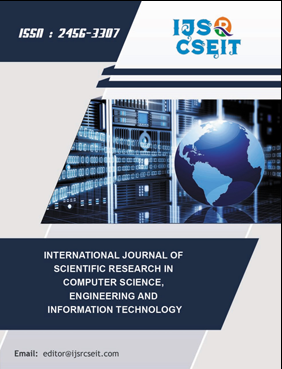A Survey on Revolutionizing Document Security: A Comprehensive Deep Learning Approach For Signature Detection and Verification
Keywords:
Document Security, Signature Detection, Signature Verification, Deep Learning, Convolutional Neural Networks (CNNs), Biometric Authentication, Forgery DetectionAbstract
In today's fast-paced business environment, automating signature verification is essential for efficiency. This project employs cutting-edge deep learning techniques: YOLOv5 for signature detection, CycleGAN for noise reduction, and VGG16-based feature extraction for verification. The workflow consists of three phases: signature detection, noise removal, and verification using cosine similarity with a threshold of 0.8. This interdisciplinary approach enhances operational efficiency and accuracy in document management and authentication, making it valuable for businesses.
References
- F. M. Alsuhimat and F. S. Mohamad, "A Hybrid Method of Feature Extraction for Signatures Verification Using CNN and HOG a Multi-Classification Approach," in IEEE Access, vol. 11, pp. 21873-21882, 2023, doi: 10.1109/ACCESS.2023.3252022.
- S. Gonwirat and O. Surinta, "DeblurGAN-CNN: Effective Image Denoising and Recognition for Noisy Handwritten Characters," in IEEE Access, vol. 10, pp. 90133-90148, 2022, doi: 10.1109/ACCESS.2022.3201560.
- N. Suciati, N. P. Sutramiani and D. Siahaan, "LONTAR_DETC: Dense and High Variance Balinese Character Detection Method in Lontar Manuscripts," in IEEE Access, vol. 10, pp. 14600-14609, 2022, doi: 10.1109/ACCESS.2022.3147069.
- H. Li, P. Wei and P. Hu, "AVN: An Adversarial Variation Network Model for Handwritten Signature Verification," in IEEE Transactions on Multimedia, vol. 24, pp. 594-608, 2022, doi: 10.1109/TMM.2021.3056217.
- SoumyadeepKundu, Sayantan Paul, Suman Kumar Bera, Ajith Abraham, Ram Sarkar, “Text-line extraction from handwritten document images using GAN”, in Expert Systems with Applications, Volume 140, 112916, 2020, doi: 10.1016/j.eswa.2019.112916.
- B. L. Davis, C. Tensmeyer, B. Price, C. Wigington, B. S. Morse, and R. Jain, “Text and style conditioned GAN for generation of offline handwriting lines,” British Machine Vision Conference, Sep. 2020, [Online]. Available: https://www.bmvc2020-conference.com/assets/papers/0815.pdf
- R. Sanchez-Reillo, J. Liu-Jimenez and R. Blanco-Gonzalo, "Forensic Validation of Biometrics Using Dynamic Handwritten Signatures," in IEEE Access, vol. 6, pp. 34149-34157, 2018, doi: 10.1109/ACCESS.2018.2849503.
- Swapnali, Londhe, et al. "A Cryptographic Key Generation on a 2D Graphics Using RGB Pixel Shuffling and Transposition." Proceedings of the International Conference on Data Engineering and Communication Technology: ICDECT 2016, Volume 2. Springer Singapore, 2017.
- K. S. Gaikwad and S. B. Waykar, "Detection and Removal Of Node Isolation Attack In OLSR Protocol Using Imaginary Nodes with Neighbour Response in MANET," 2017 International Conference on Computing, Communication, Control and Automation (ICCUBEA), Pune, India, 2017, pp. 1-5, doi: 10.1109/ICCUBEA.2017.8463762.
- Z. Xia, T. Shi, N. N. Xiong, X. Sun and B. Jeon, "A Privacy-Preserving Handwritten Signature Verification Method Using Combinational Features and Secure KNN," in IEEE Access, vol. 6, pp. 46695-46705, 2018, doi: 10.1109/ACCESS.2018.2866411.
- S. Biswas, D. Bhattacharyya, T.-H. Kim, and S. K. Bandyopadhyay, “Extraction of Features from Signature Image and Signature Verification Using Clustering Techniques,” in Communications in computer and information science, 2010. doi: 11.1007/978-3-642-16444-6_62.
- D. Impedovo and G. Pirlo, "Automatic Signature Verification: The State of the Art," in IEEE Transactions on Systems, Man, and Cybernetics, Part C (Applications and Reviews), vol. 38, no. 5, pp. 609-635, Sept. 2008, doi: 10.1109/TSMCC.2008.923866.
- Gaikwad, Yogesh J. "A Review on Self Learning based Methods for Real World Single Image Super Resolution." (2021).
- V. Khetani, Y. Gandhi and R. R. Patil, "A Study on Different Sign Language Recognition Techniques," 2021 International Conference on Computing, Communication and Green Engineering (CCGE), Pune, India, 2021, pp. 1-4, doi: 10.1109/CCGE50943.2021.9776399.
- Vaddadi, S., Arnepalli, P. R., Thatikonda, R., &Padthe, A. (2022). Effective malware detection approach based on deep learning in Cyber-Physical Systems. International Journal of Computer Science and Information Technology, 14(6), 01-12.
- Thatikonda, R., Vaddadi, S.A., Arnepalli, P.R.R. et al. Securing biomedical databases based on fuzzy method through blockchain technology. Soft Comput (2023). https://doi.org/10.1007/s00500-023-08355-x
- Rashmi, R. Patil, et al. "Rdpc: Secure cloud storage with deduplication technique." 2020 fourth international conference on I-SMAC (IoT in social, mobile, analytics and cloud)(I-SMAC). IEEE, 2020.
- Khetani, V., Gandhi, Y., Bhattacharya, S., Ajani, S. N., &Limkar, S. (2023). Cross-Domain Analysis of ML and DL: Evaluating their Impact in Diverse Domains. International Journal of Intelligent Systems and Applications in Engineering, 11(7s), 253-262.
- Khetani, V., Nicholas, J., Bongirwar, A., &Yeole, A. (2014). Securing web accounts using graphical password authentication through watermarking. International Journal of Computer Trends and Technology, 9(6), 269-274.
- Sairise, Raju M., Limkar, Suresh, Deokate, Sarika T., Shirkande, Shrinivas T. , Mahajan, RupaliAtul& Kumar, Anil(2023) Secure group key agreement protocol with elliptic curve secret sharing for authentication in distributed environments, Journal of Discrete Mathematical Sciences and Cryptography, 26:5, 1569–1583, DOI: 10.47974/JDMSC-1825.
- Kale, R., Shirkande, S. T., Pawar, R., Chitre, A., Deokate, S. T., Rajput, S. D., & Kumar, J. R. R. (2023). CR System with Efficient Spectrum Sensing and Optimized Handoff Latency to Get Best Quality of Service. International Journal of Intelligent Systems and Applications in Engineering, 11(10s), 829-839.
- Nagtilak, S., Rai, S., & Kale, R. (2020). Internet of things: A survey on distributed attack detection using deep learning approach. In Proceeding of International Conference on Computational Science and Applications: ICCSA 2019 (pp. 157-165). Springer Singapore.
- Mane, Deepak, and AniketHirve. "Study of various approaches in machine translation for Sanskrit language." International Journal of Advancements in Research & Technology 2.4 (2013): 383.
- Shivadekar, S., Kataria, B., Limkar, S. et al. Design of an efficient multimodal engine for preemption and post-treatment recommendations for skin diseases via a deep learning-based hybrid bioinspired process. Soft Comput (2023). https://doi.org/10.1007/s00500-023-08709-5
- Shivadekar, Samit, et al. "Deep Learning Based Image Classification of Lungs Radiography for Detecting COVID-19 using a Deep CNN and ResNet 50." International Journal of Intelligent Systems and Applications in Engineering 11.1s (2023): 241-250.
Downloads
Published
Issue
Section
License
Copyright (c) IJSRCSEIT

This work is licensed under a Creative Commons Attribution 4.0 International License.

